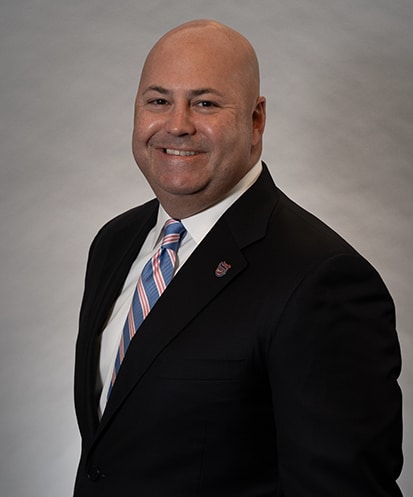Videomicroscope Technology Making Surgery More Efficient and Precise
 For many decades, Olympus has developed and manufactured some of the top high-technology photography equipment in the industry. Over the years, the company has expanded its product portfolio, offering innovative equipment solutions for the medical field, and specifically for surgical procedures. In late 2017 the company unveiled its new 4K-3D Video Microscope, ORBEYE. The new surgical microscope was developed through a joint venture between Olympus and Sony Imaging Products & Solutions Inc. under the company Sony Olympus Medical Solutions Inc. (SOMED).
For many decades, Olympus has developed and manufactured some of the top high-technology photography equipment in the industry. Over the years, the company has expanded its product portfolio, offering innovative equipment solutions for the medical field, and specifically for surgical procedures. In late 2017 the company unveiled its new 4K-3D Video Microscope, ORBEYE. The new surgical microscope was developed through a joint venture between Olympus and Sony Imaging Products & Solutions Inc. under the company Sony Olympus Medical Solutions Inc. (SOMED).
The videomicroscope is used in conjunction with 3D glasses and enables surgeons to view the brain from an entirely new perspective. The digital images produced through the ORBEYE microscope help surgeons perform more accurate procedures through the display of a magnified high-resolution 3D imaging of the surgical site, including tissue, blood vessels, and other elements. Utilizing a large 55 inch monitor display, surgeons and the entire surgical team in the room are able to view the progress of the procedure. Viewing on the large monitor instead of through microscope eyepieces has the potential to reduce surgeon fatigue. It also enables surgeons to capture “the brilliance and the beauty of the surgical anatomy.”
Characterized by Dr. Charles L. Branch, chief of neurosurgery at Wake Forest Baptist Medical Center in Winston-Salem, N.C. as “a Coke can on a stick over my shoulder”, the camera utilized with the microscope is easy to manipulate into various positions and angles not possible with a standard microscope.
Its scope sits on the surgeon’s shoulder and easily projects the view of what the surgeon sees on a large monitor. This arrangement enables surgeons to rely on the image as their guide without the need to share the microscope or crane their necks downward during a long surgical procedure. The new technology has the potential to reduce surgical errors that could potentially form the basis of a medical malpractice case.
The use of Orbeye in a critical brain surgery case
A New York Times story describes the experience of Anita Roy, 66, who was diagnosed with moyamoya disease. The disease is “a rare, progressive blood vessel (vascular) disorder in which the carotid artery in the skull becomes blocked or narrowed, reducing blood flow to your brain. Tiny blood vessels then open up at the base of the brain in an attempt to supply the brain with blood.” The clusters of tiny blood vessels are not able to supply the necessary oxygen and blood to the brain, resulting in brain injury – either temporary or permanent. The disease is most common in children, but also affects adults. Its spread is worldwide, but concentrates especially in East Asian countries such as China, Japan, and Korea.
Due to the fact that moyamoya disease can lead to such outcomes as brain hemorrhage, mental decline, multiple strokes, and even death, Ms. Roy was fully convinced to move forward with brain surgery.
Despite any number of medical advances that have occurred, brain surgery still poses risks to the patient. Many times a portion of the skull must be removed which can increase the risk of infection. The problems addressed many times are microscopic in nature and any surgical error can result in lasting damage to the brain.
Dr. Langer, as the surgeon performing Ms. Roy’s procedure, utilized the Orbeye to intricately reroute a blood vessel in her brain to another series of arteries. Through the magnification provided by the videomicroscope, Dr. Langer was able to view the surgical site clearly, utilizing a needle “about the size of an eyelash,” and a thread “barely visible to the naked eye.” Another surgeon in the room viewing the progression of the procedure suggested an area that required additional attention, and it was addressed.
Within a few days, Ms. Roy was up in bed talking with her husband during lunch. She described the operation as “like, nothing.”
Dr. Langer stated that not all of these procedures turn out with such success. He said, “These things are high risk, and they don’t always turn out perfectly.”
Advancements in surgical technologies can minimize the risks
Not all surgical risks can be avoided, even with the latest in high technology medical equipment. However, the newest technologies such as 3D projection and enhance magnification provided by Orbeye may result in lower fatality rates due to surgical errors over time.
Please contact Paulson & Nace, PLLC through this contact form or by calling 202-463-1999.

Christopher T. Nace works in all practice areas of the firm, including medical malpractice, birth injury, drug and product liability, motor vehicle accidents, wrongful death, and other negligence and personal injury matters.
Read more about Christopher T. Nace.
